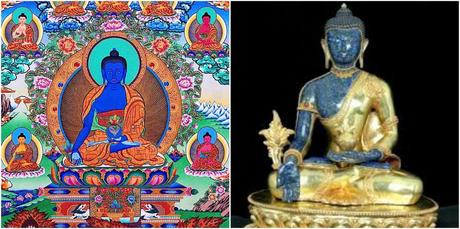
An incredible stone found in human history since the beginning of time. Lapis Lazuli is a deep blue semi precious stone. Lapis is defined as a rock geologically speaking. I also found out that it appears in the most ancient civilizations known to man. Furthermore it was of utmost importance because it was a stone used to revere gods and God. Its spiritual journey through the Silk Route to acquire the Lapis Lazuli for temples and churches superseded primitive quests.
In this post you will find
Ancient Civilizations
Historians believe the link between lapis lazuli and human beliefs dates back over 6,500 years. Ancient civilizations, including Egyptian, Mesopotamian, Chinese, Roman and Greek, valued highly this stone.
From experience, I've discovered that ancient civilizations were wiser than the new ones. Ancient civilizations were convinced that lapis should accompany royalty to the afterlife. Maybe Lapis Lazuli really has these godly properties they apparently made use of.

Lapis lazuli is found in Neolithic tombs in Mauritania and in the Caucasus. The Egyptians decorated Tutankhamen's (1341-1323 B.C) funeral mask with Lapis Lazuli. Egyptians also used scarabs and amulets on their tombs.
Lapis Lazuli History in Ancient Greece
Theophrastus
 In his book on stones, the Greek scientist Theophrastus (ca. 372 B.C. - 287 B.C.) described "the sapphirus, which is speckled with gold," a description which matches lapis lazuli.
In his book on stones, the Greek scientist Theophrastus (ca. 372 B.C. - 287 B.C.) described "the sapphirus, which is speckled with gold," a description which matches lapis lazuli.
Theophrastus studied at Athens and became an ardent supporter of the philosophies of Plato (424/3 B. C. - 348/7 B. C.). While there, he became a pupil and friend of Aristotle (384 B. C. - 322 B. C.), and when Aristotle went into exile, Theophrastus succeeded him as the leader and principal spokesman of the Peripatetic school of philosophy - a leadership he held until his death.
Book Of Stones
 Theophrastus's work is of special interest in the history of mineralogy because it is the largest fragment to survive from classical times that treats mineral substances in a meaningful way. The text, written as a series of 69 paragraphs, suggests that the De Lapidibus was originally written as a series of lecture notes that the author would have delivered in the gardens of the Lyceum almost two millennia ago. Metals are said to be composed of water, while stones and mineral earths are composed of earth. A mineral occurs because its substance has been purified through filtration, and its degree of purity can be determined by examining such qualities as smoothness, density, luster, and also transparency.
Theophrastus's work is of special interest in the history of mineralogy because it is the largest fragment to survive from classical times that treats mineral substances in a meaningful way. The text, written as a series of 69 paragraphs, suggests that the De Lapidibus was originally written as a series of lecture notes that the author would have delivered in the gardens of the Lyceum almost two millennia ago. Metals are said to be composed of water, while stones and mineral earths are composed of earth. A mineral occurs because its substance has been purified through filtration, and its degree of purity can be determined by examining such qualities as smoothness, density, luster, and also transparency.
On Stones, Theophrastus said that exist a kind of false emerald and a kind of melted lapis lazuli like glass paste[3] and give us more details on the manufacture of kyanos chytos as a product similar to the real thing (probably natural lapis lazuli), but which became after firing.
Lapis Lazuli History in Roman Empire
The ancient scholars mixed up Lapis Lazuli and sapphire because there was confusion when it came to mineral, rocks, semi precious and precious stones of the day because of the different cataloguing of earliest scholars as to specific points, qualities and attributes of a stone.
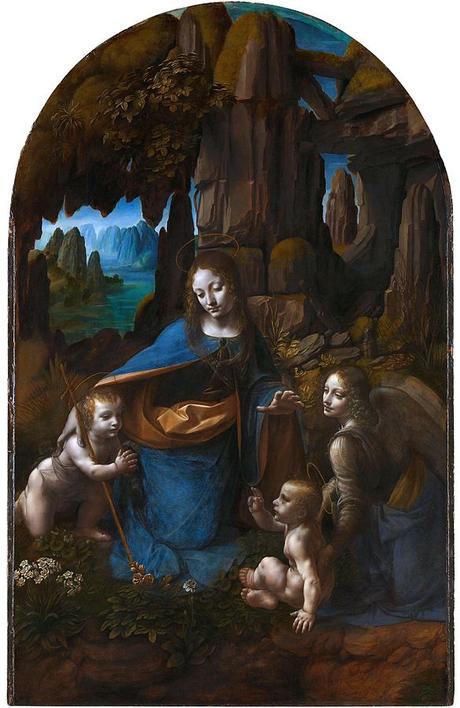
Lapis Lazuli was also commonly used for religion shrines and for their artisans, painters and decorative elements on the altars of churches. Master artists like Michelangelo, Da Vinci, Fra Angelico and others, used the mineral as a pigment. Ultramarine was the finest and most expensive of all blue pigments. Lapis was also reserved for the clothing of almost all the central figures of their paintings, especially the Virgin Mary.
Russian Czars praised the beautiful Imperial Egg designed by Peter Carl Faberge made in Lapis Lazuli.
Greeks and Romans also used Lapis in the treatment of epilepsy, circulatory diseases and skin troubles.
Lapis Lazuli was also the symbol of royalty and honor, gods and power, spirit and vision. That`s why there's an amazing display of a queens lapis lazuli beads, tiara and artifacts.

Lapis Lazuli is a third eye chakra stone that will develop your intuition as well as amplifying and expanding psychic visions and clairvoyant abilities. This stone is known to heal hearing loss and vertigo.
Nammu.com has a variety of beautiful amulets.
We have seen the beautiful things artisans have created with lapis pigments. The healing properties they have are amazing. Although I have never used lapis for healing, I have spoken to people who have. One of them told me that when they wear lapis, they feel at peace and capable of anything. I for once want to try it.
I was watching T.V with my 5 year old and there it was. Lapis Lazuli in a cartoon. A magical and one of the most powerful characters in Steven Universe. With its characteristic blue color, this character represents one of the gems of this universe. Even my son knew more about lapis than me.

Lapis Lazuli had, has and will keep having a significant importance in human life. I know it and I know you know it too.
Lapis Lazuli History in Mesopotamia
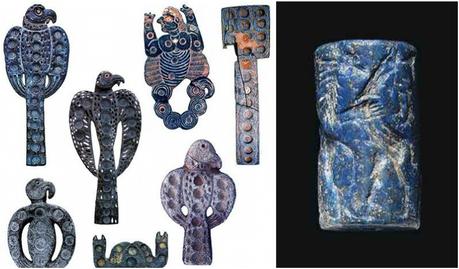
From at least 4000 B.C Lapis Lazuli was being traded westward from Afghanistan to the burial grounds of Mesopotamia. Royalty felt safer for the journey to the underworld if they could placate the gods with gifts of sacred Lapis Lazuli. It was their insurance. In Lapis Lazuli - Mesopotamian´s Sacred Gem we will learn about important archaeological sites where impressive pieces art of Lapis Lazuli have been found. Sites like Ur where the famous Standard of Ur was found. Also sites like Uruk, Jiroft. Mari where the Treasure of Ur was discovered and also the famous libraries of Ebla.
Mesopotamia was also known as the Land of the Two Rivers. Never has Badakhshan Lapis Lazuli been so highly valued as it was intermittently over some two thousand years by the people of Sumer.
Some of the most beautiful lapis objects have been excavated in cities flourishing around the middle of the third millennium B.C.
Persuading the Gods
Some grave goods were clearly included to alleviate life in the underworld. Others such as sacred sanctifying Lapis Lazuli, might persuade the Gods to look more kindly on the new arrival. Lapis Lazuli or za-gin to the Sumerians of late third Millennium B.C. Ur was the great treasure. It was also synonymous with gleaming splendor, the attributes of gods and heroes.
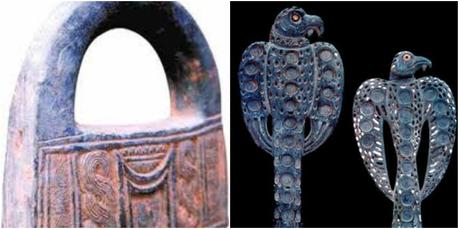
Thousands of lapis beads and objects have been found in graves dug around huge temple complexes, as for instance at the greatest of Sumerian cities, Uruk and at the later city of Ur.
Shahr-I Sokhta
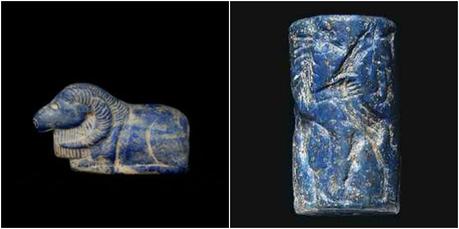
The city of Uruk is the most impressive example of these sites. It has a history of some 5,000 years (from circa 4000B.C) and its site covering as much as 850 hectares at its peak in that early fourth millennium B.C when Lapis Lazuli was making its way appearance. It is also home to one of our heroes. Like we have read in Lapis Lazuli Legends, our hero Gilgamesh was the ruler of Uruk around 2750 B.C at the edge of Mesopotamian history.

Uruk marks the beginning of the Lapis Lazuli craze in Sumer. It was most spectacularly sustained in mid-third millennium B.C, when quantities of it was discovered in the course of European excavations that followed World War I.
When we talk of contemporary sites we can include Ur, Mari, and also Ebla.

This site was excavated by British archaeologist Leonard Woolley. The ruins of Ur are about 350 kilometers south of Baghdad. He found a series of incredible royals tombs dated back to 2,400B.C.
Great Death Pit
Of 1850 tombs, 400 were from the third millennium B.C. This was also known as The Royal Cemetery of Ur. Woolley found incredible quantities of treasures. Sixteen of them were have been designated 'royal' graves because of the treasures inside. Some were single graves and others multiple. The strangest of these tombs was the one called the Great Death Pit. It contained about seventy bodies, men and women, animals, and royal occupants.
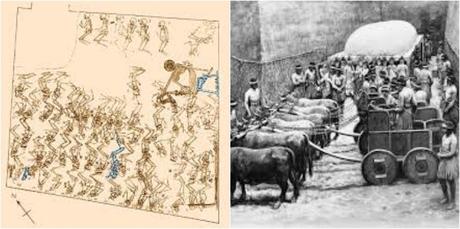
Woolleys vivid imagination said about this grave:
'Now down the sloping passage comes a procession of people, the members of the court, soldiers, men servants and women, the latter in all their finery of brightly colored garments and head dresses of lapis lazuli and silver and gold and with them musicians bearing harps or lyres, cymbals, and sistra; they take up their positions in the farther part of the pit and then there are driven or backed down the slope the chariots drawn by animals, and these too are marshaled in the pit. Each man or women brought a little cup of clay or stone or metal, the only equipment required for the rite that was to follow.'
The court ladies were dressed with golden lyres inlaid with Lapis Lazuli.
Standard of Ur
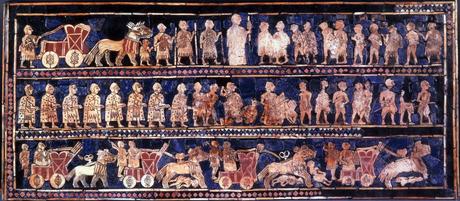
One of the most beautiful objects found in this site was "The Standard of Ur". According to Wikipedia it is 4,500 years old. It is a wooden box inlaid with Lapis Lazuli and shell. It had on one side a battle scene and on the other a religious banquet, dual aspects of Sumerian kingship, 'the military leader and the mediator between humans and gods (the divine).'
The finest jewelry of all was buried with Puabi. There was a lapis seal beside her right arm, gold and lapis pins by her left arm, large lapis and agate beads by her right shoulder.

Another important finding was a lyre decorated with the bull´s head, whose hair, beard and eyes were of Lapis Lazuli. No one knows for sure if she was a queen or a priestess.
The whole ensemble of grave goods highlights the high standard of craftsmanship in Ur. As well as the wealthy patronage.
The findings of this incredible treasure was divided in three museums that were the Iraq Museum, the British Museum and the University of Pennsylvania in Philadelphia which had both helped finance the excavation.
In this site, a magnificent lapis and gold eagle was found in the 1930s in the ruler´s palace, with many other lapis objects. This site was excavated by French archaeologists, led by Professor André Parrot.
Most of the statues found in huge numbers in the temples are now in the Aleppo Museum have lost their Lapis Lazuli irises.
Treasure of Ur
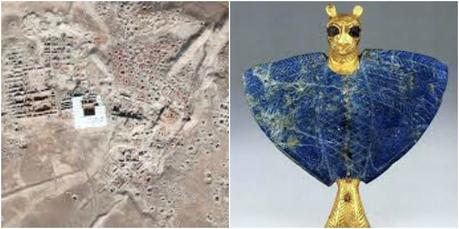
Ebla was a successful commercial center. Italian archaeologists excavate this site since the 1960s. Over twenty-four acres temples, palaces, a Royal Palace have been unearthed. Excavations still continue.
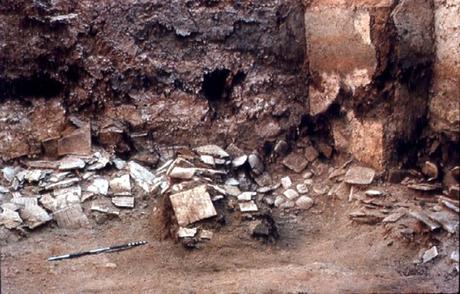
A hym to Baal also describes the construction for him of "a mansion of brilliant Lapis Lazuli".
Mesopotamian history shows us that there was a society wealthy enough to patronize superb craftsmanship anxious to conciliate temperamental gods. Land of gods, gems for the gods, Mesopotamia..
Lapis Lazuli History in Sumerian Culture and Epic Poetry

Lapis lazuli is one of the most popular stones from the beginning of human history. Its deep, "cosmic" blue color is a symbol of royal persons and Gods, a symbol of honor, strength, spirit and vision. It is also a universal symbol of wisdom and truth.
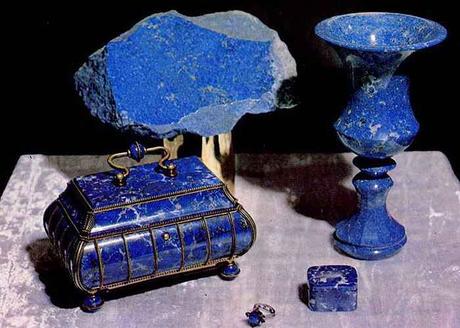
The properties and value of the stone is lapis lazuli are really exceptional. In ancient times lapis lazuli was especially appreciated because of its beautiful color and the valuable ultramarine dye derived from it.
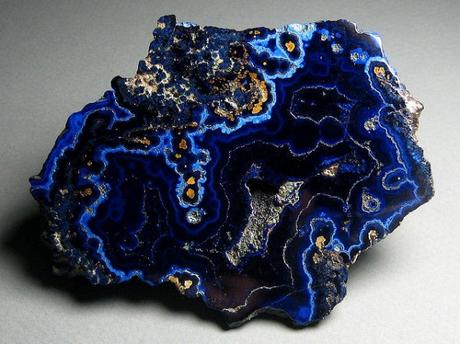
"Lapis lazuli is a sky-blue color. A good one is that which has no veins and white spots, does not change color in fire and has golden specks "- wrote the Armenian historian of the 17th century Arakel Davrizhetsi.
Today this wonderful stone is considered semi-precious, but in the deepest antiquity and at least until the XVII century it was considered precious. "... this is a genuine precious stone .." -testifies Arakel.
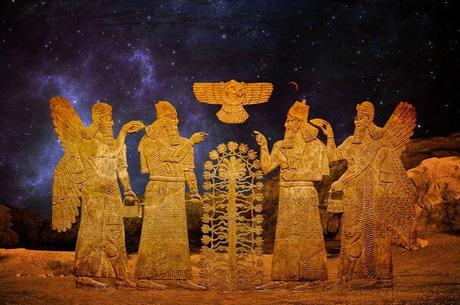
Even for 2-3 millennium BC, Sumerian queens proudly wore gold jewelry with lapis lazuli. Its color and golden specks symbolized the starry sky and, apparently, it was believed that possessing this marvellous stone is the same as having a piece of the starry sky. Even on their last journey, the queens wearing jewelry with the dominant presence of lapis lazuli, while the mourners pronounced the spell: "Your beautiful lapis lazuli does not split the cutter in the underworld!" ("The Descent of Innin into the Underworld"),
In the large Sumerian city of Ur, the lunar god was depicted in the form of a bull with a lapis lazuli beard.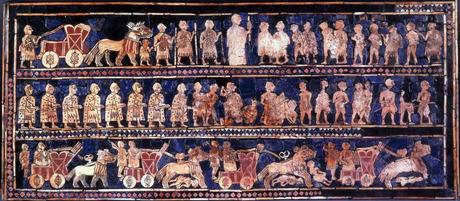
In the Sumerian temples, crypts, tombs excavated in the 20th century, many items, real works of art encrusted with lapis lazuli were found, even the signs of dominion and court in Sumerian epics literally meant: "a measuring ruler made of lapis lazuli. " And even here, we are able, through the Armenian language, to explain the real meaning of such a strange phenomenon, at first glance, as the fact that the measuring ruler is a symbol of dominion and court. The fact is that in Armenian, the word "ruler" is translated as քանոն (qanawn), which has another meaning "canon, law", so it is not surprising that the ruler is a symbol of dominion and judgment, but why is the lazurite ruler? Yes, because the laws in Sumer came from the same place, from where lapis lazuli ...
Many researchers quite reasonably believe that in Sumerians valued lapis lazuli more than any other precious stone s. But not only due to this fact the stone of Sumerian queens is interesting.
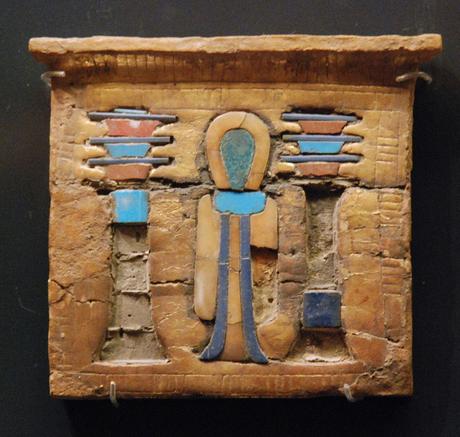
In the mythology of the Sumerians, the goddess Inanna (the predecessor of Aphrodite and Venus) travelled to the world of people with the help of lapis lazuli and measured the length of human lives. These crystals were considered to be a divine flesh, and according to the beliefs the Gods were crystalline beings.
Lapis Lazuli in epic poetry

As lapis lazuli very often mentioned in the The fact is that neither in the Sumerian surroundings, nor anywhere else in the neighborhood with them, was possible to produce lapis lazuli, and even with such aFor example, it is known that such Sumerian epic poetry, the stone became one of the main pointers in the problem of historical character. magnificent quality. It follows from the same writings that the main suppliers of processed lapis lazuli to Sumer were the inhabitants of Aratta. The exact location of this country is still unknown. Various hypotheses are proposed and, as I have already said, lapis lazuli is considered one of the main indicators for solving this problem. This hypothesis relies mainly on the lines from the poem "Enmercar and the High Priest of Aratta," which literally says the following: "..lapis lazuli are collected from at its deposits for her [the goddess Innin]." high-quality lapis lazuli can be extracted only in the north of Afghanistan in Badakhshan and therefore a hypothesis arose ( according to author V.Sirianidi), who stated that Aratta was located exactly there, in the north of Afghanistan.
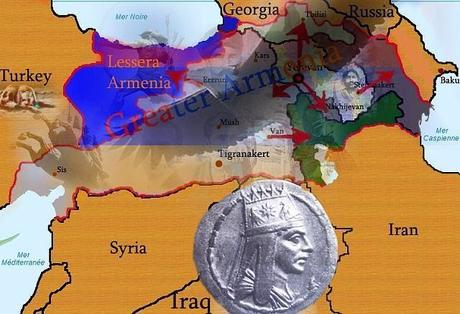
However, for a number of reasons, this hypothesis finds no evidence. There are many other hypotheses, mainly based on the idea of reexport of lapis lazuli, but I do not consider it possible and necessary to enumerate them. The only thing that exactly follows from all this, is the categorical rejection of the hypothesis according to which Aratta could be located somewhere in the territory of historical Armenia.

Meanwhile, among the other things, what else we have to talk about this problem, the world of science will still have to pay attention to Armenia as a country where lapis lazuli production has been strongly developed since ancient times. If this were not so, then it would be very surprising to see why the ancient Greek scholars Theophrastus and Pliny II in their works called lapis lazuli "Armenian stone". This state of affairs is possible only if Armenians have already monopolized Theophrastspheres of processing and trade of lapis lazuli for many centuries before Theophrastus, that is, long before the 4th century BC. It's amazing why this fact has not been taken into account until now ...
Genuine jewel
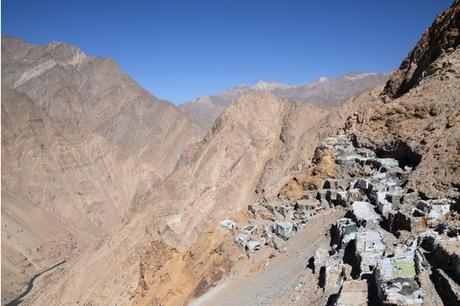
Moreover, according to the evidence of the Armenian historian Arakel Davrizhetsi, we can trace the ways in which lapis lazuli was transported from Badakhshan came to Armenia. With knowledge of this matter describing the characteristics of quality lapis lazuli, Araqel Davrizhetsi, writes that this quality " corresponds only to the stone mined in the mines of Badakhshan." About stones from Kash and Shamishaide Arakel responds scornfully, calling them counterfeit, while about lapis lazuli from Badakhshan speaks with admiration - "This is a genuine jewel!" And a little further he pronounces the next, very important for us phrase - "We get it from Uzbeks, "that is, those very indigenous inhabitants of northern Afghanistan. In fact, in the 17th century, Armenians still had direct trade relations with one of the main ethnic groups of the population of northern Afghanistan, where Badakhshan is located. Certainly it is possible to assume that there is no reason to deny that this scheme of supplies of Badakhshan's lapis lazuli was used from the deepest antiquity, when the sumerian cililisation existed and flourished.
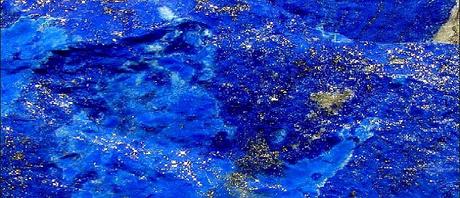
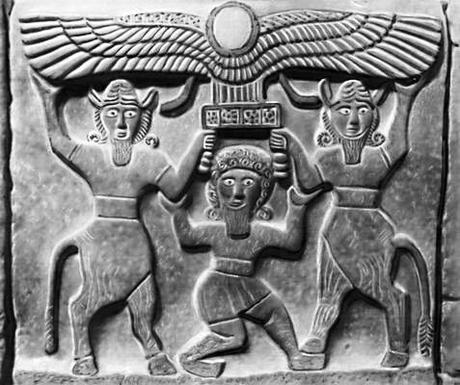
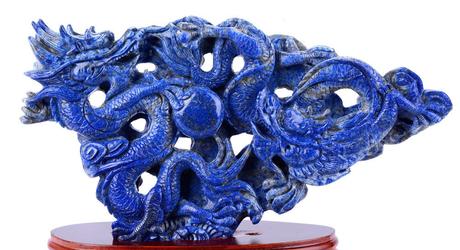
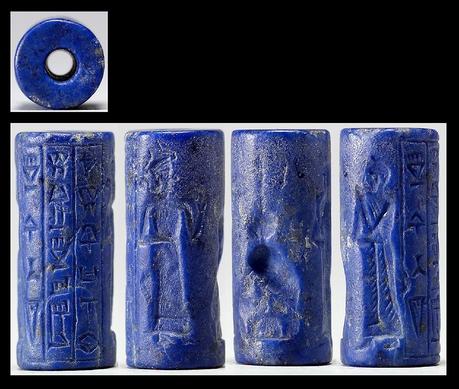

Commerce due to pilgrimage and trade has shown us an incredible exchange of knowledge between cultures like an exquisite glass goblet decorated with trails of Lapis Lazuli known as the "Luck of Edenhall". In Lapis Lazuli in the Islamic World we`ll learn how pilgrimage helped the trade of our beloved lapis through large distances.
Lapis Lazuli was a stone of such value that it was fundamental for a Muslim pilgrim. It could pay for the expenses of to renew one´s submission to Allah in Mecca. Pilgrimage was never cheap. You needed something in your bags to pay for your lodging and also your keep. The importance of the pilgrimage, or hajj, to a Muslim led to the spirit of enquiry both mental and physical so characteristic of the medieval Islamic world.

Pilgrimage is an important part of the story, the journey of the devout. It is an intrinsic part of all religion. The Prophet Muhammad, having received the word of God in a hillside cave above Mecca. He imposed five obligations on all Muslims. They were: to bear witness to God, to pray five times a day, to fast in the month of Ramadan, to give alms and also to make the pilgrimage to Mecca. This Pilgrimage was dangerous and a Lapis Lazuli amulet was believed to protects one´s path.
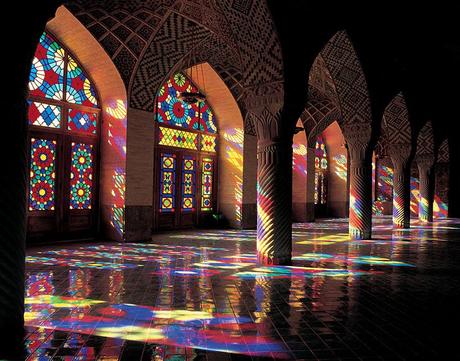
Pilgrimage necessitated travel; the medieval Muslim accounts of the journey to Mecca, known as rihla, are some of the world´s earliest travelogues. With travel came the exchange of goods, ideas and technologies. Muhammad had been a merchant before he became the messenger of God. Mecca had long been a major commercial as well as religious center. Trade was at the heart of the subsequent Muslim expansion.
'The truthful merchant will sit under the throne of God' was one of many sayings of the Prophet' Click To Tweet
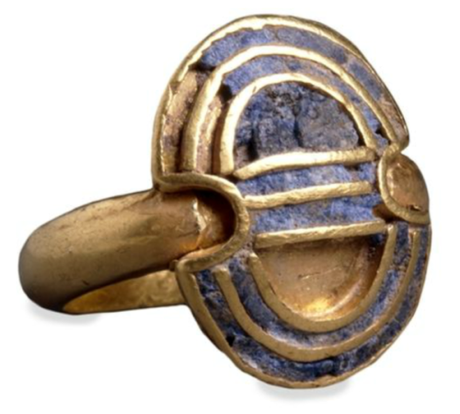 Beads cut from Lapis Lazuli have been crucial guides to the travels of the precious stone. It´s easy to imagine a hajj pilgrim setting out from the Oxus world with some pieces of beautiful Sar-i-Sang Lapis Lazuli in his bags. He would sell it carefully as he travels across Khurasan, then Iraq, perhaps also joining the Baghdad hajj caravan for safety. Selling the last remaining pieces of lapis in Mecca in order to buy goods for his return. The purchaser in Mecca of those lapis beads could be another pilgrim maybe from Africa. He would head for Cairo where he might have met in the market place a merchant from Jenne or Timbuktu. That second merchant might have taken the Lapis Lazuli to the stone carver (probably Jewish; the craft often seems to have been concentrated in Jewish hands) to have it turned into trade beads.
Beads cut from Lapis Lazuli have been crucial guides to the travels of the precious stone. It´s easy to imagine a hajj pilgrim setting out from the Oxus world with some pieces of beautiful Sar-i-Sang Lapis Lazuli in his bags. He would sell it carefully as he travels across Khurasan, then Iraq, perhaps also joining the Baghdad hajj caravan for safety. Selling the last remaining pieces of lapis in Mecca in order to buy goods for his return. The purchaser in Mecca of those lapis beads could be another pilgrim maybe from Africa. He would head for Cairo where he might have met in the market place a merchant from Jenne or Timbuktu. That second merchant might have taken the Lapis Lazuli to the stone carver (probably Jewish; the craft often seems to have been concentrated in Jewish hands) to have it turned into trade beads.
Such networks of merchants linked to pilgrimage played a crucial role in the transmission of precious goods, specially our magnificent Lapis Lazuli. Lapis was found around the Middle East and Mediterranean. In such final stops as Constantinople, Alexandria, Aleppo, Baghdad, and also away along that Great Khurasan Road to Merv, connecting there with eastern trade routes, the Oxus and the mines themselves.
Glass Making

The tradition of fine glass making has a long history in Syria and also in Egypt. The glass makers of the medieval world of Islam benefiting from the wealthy patronage of the court circle. 'Nowhere in the world like Damascus, can one see more beautiful glass objects'.
Luck of Edenhall
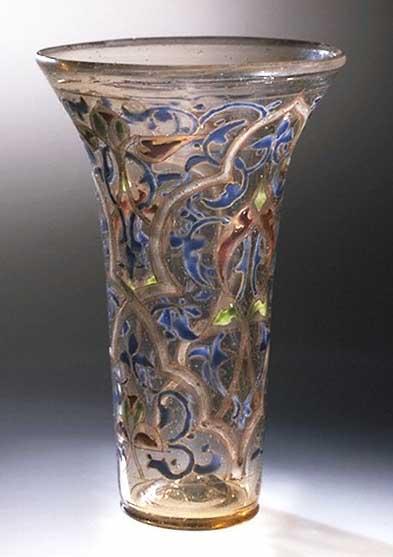
The "Luck of Edenhall" belongs to a tradition of the finest medieval Islamic glass making. The greatest achievement of the thirteenth to fourteenth century glass makers was in enameling of glass. Decorating the blown vessel with calligraphy (the writing of Arabic), floral decoration and also arabesques. One of the most dominant colors is blue derived from finely ground Lapis Lazuli.
The blue of the Luck of Edenhall comes from finely ground Lapis Lazuli as if made for pigment. Then mixed with a lead oxide flux that would enable the blue decoration to fuse to the blown vessel at much lower temperature than that used for the vessel itself.
It is sixteen centimeters high and and according to Wikipedia it was probably made in Syria. It is of brownish colorless glass and densely decorated with blue, white, green and also red arabesque. All the Lapis Lazuli on it surely gives it a sacred role.
This beautiful work of art is now in the Medieval Renaissance Gallery in the Victoria and Albert Museum.
Pilgrimage is one of the foundations of trade. Is the reason beautiful object like our magical Lapis Lazuli from across the world finished in the local bazaar or market. It connects different cultures and religions. This is another proof of the impact lapis had in another religion. Lapis Lazuli has been tied to Islam since the Prophet Muhammad . Till next time.
Lapis Lazuli History in Chile

Diaguita Indians
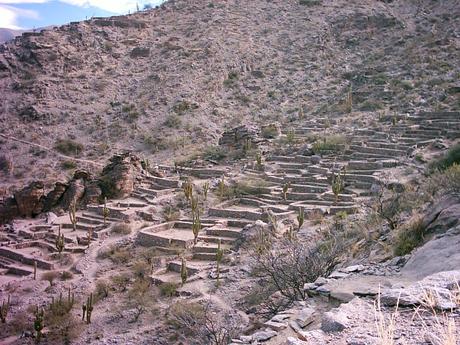 Saved from Wikipedia. Diaguita Ruins at Ovalle
Saved from Wikipedia. Diaguita Ruins at Ovalle The Diaguita Indians in the 4 th century found Lapis Lazuli in Ovalle Cordillera, Coquimbo, Chile. They used lapis beads for necklaces with styles that are still used in modern fashion trends like we can appreciate in Nammu.com.
The Diaguita Indians were an aboriginal group. They were also sophisticated artists. Specializing on metal and ceramic work using Lapis Lazuli.
The Incas expanded their empire near the mountains of Lapis Lazuli during the 15 th and 16 th century. Inca Tupac Yupanqui, grandfather of Huascar and Atahualpa advanced in lands of the "Araucanos", the "Mollense" and the "Diaguita" whose women adorned themselves with Lapis Lazuli beads from Tulalwen.
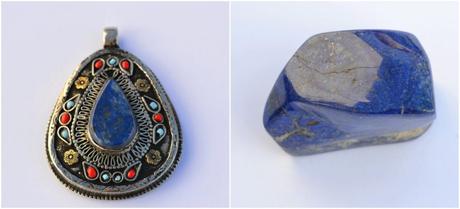
Numerous pre-Inca civilizations also used Lapis jewelry and adornments. The Incas, Molles and Diaguitas and other pre-colombian cultures also have used lapis for thousands of years to ornament masks and other artifacts.
Chile supplied all the ancient civilizations of the area from Ecuador to Maule.
In 1850, F. Field published the existence of Chilean Lapis Lazuli.
The actual location of this precious stone in the South American continent is in the Ovalle Cordillera at 3600 above sea level east of Tulalwen at the Monte Patria commune. It is only 200mts from the Argentinean border.
Flor de los Andes
There are three mining concessions in these mountains. Flor de los Andes is the oldest concession established 1952 and is controlled by the company Las Flores de los Andes S.A. .
It was in 1950 when it begun commercial mining. The company built a 60km access road in 1989 that allowed for the transport of machinery to the mine on order to start the extraction of material in larger quantities.
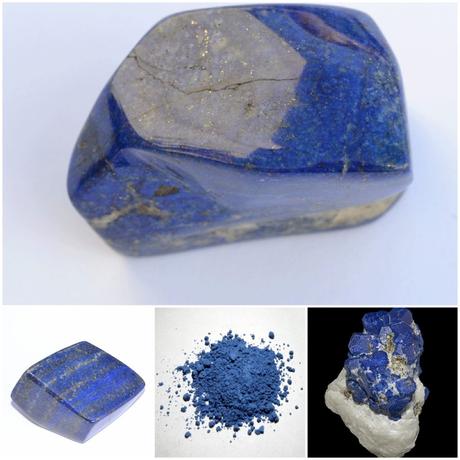
Due to the extreme conditions this site can only be mined during the Chilean summe r that is January to April.
Its incredible how although the mines from Chile and Afghanistan have incredible rough climate conditions, people still manage to risk there lives for this magical stone.
San Marcelo and La Seguridad
In 1995 a group of Chilean companies consolidated to form Compañia Minera LapisChile S.A. which now controls the other two concessions San Marcelo and La Seguridad.
The National Service of Geology and Minery of Chile informs that there hasn't been Lapis Lazuli production since 2010. On 2006 it reached its peak with 400 tons and in 2009, the last year of activity it produced 215 tons of lapis.
The main reason the company stopped producing is the illegal mining. The organized crime syndicates took charge of the area. They even use part of the camps and infrastructure of the company. An important percentage of lapis sales in Chile come from this illegal mining and contraband. A small percentage comes also from what's left of the company that can still work.

Sales of Lapis Lazuli on Chile are above the USD2million monthly.
Nowadays Lapis Lazuli is also employed on the creation of jewelry especially in Chile. Chile also exports great quantities to Europe and the United States.
The Ministry of Mining declared Lapis Lazuli Chiles National Stone on November 23 of 1984 under decree 62.
The FIFA World Cup Jules Rimet also had a Lapis Lazuli base. It was stolen in Brazil in 1983 and was never found Click To Tweet
The Chilean Lapis is formed by the metasomatic introduction of sulfur into impure limestone.
Categories
Four-category quality scheme used to grade Chilean Lapis Lazuli:
- -First Quality material: Dark Blue to ultramarine blue lazurite with no gray calcite. Finely dispersed pyrite may be present.
- -Second Quality material: Dark blue to medium blue lazurite. Significant amount of white spots and specks of pyrite and also minor gray calcite.
- -Third Quality material: Deep Blue to pale blue lazurite. Appreciable amounts of gray and white minerals and also small quantities of pyrite.
- -Fourth quality material: Subordinates amount of lazurite tones of blue, it also has gray calcite.
Most carvers and jewelry manufacturers will not use pieces of lapis with less than 70% lazurite. Material with less than 50% lazurite is used only for construction material as slabs, countertops or tiles.
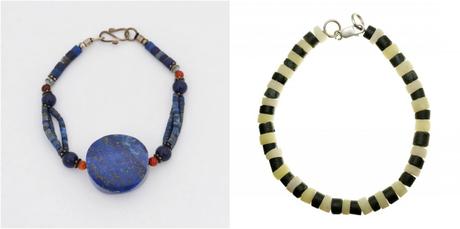
The Chilean craftsmen also make penguin, condors, pendants, necklaces, spheres, etc. All these beautiful lapis objects are very coveted by the thousands of tourists that each day walk through Santiago de Chile looking for lapis.
Although the difficulties to acquire this magnificent stone on both the largest mines world wide, it is proven that people will go to extreme lengths even risking their lives to own this precious stone.
Thankfully we don't have to take these risks. Only contact Nammu.com and acquire this exquisite stone.
Lapis Lazuli History in Europe

Idar-Oberstein, the gem centre of Europe. A beautiful city where you can find incredible quantities of Lapis Lazuli of all shapes and forms compared only with the warehouses found in Peshawar. Lapis artisans have existed a couple of millenia B.C. A lot of traditions have been continued by the artisans of today. Here in Idar-Oberstein-Gem Center of Europe we will get to learn a little of these traditional lapis artisans.
The gem cutting craft in Idar-Oberstein developed some five hundred years ago (possibly far earlier). When miners discovered local deposits of agate and amethyst. Cutting, slicing, drilling and polishing the rock became a major industry.

Then in the 1800's the agate began to run out. Idar's master craftsmen from the nineteenth century traveled around the world in search of the missing agate. South America was one placed they went. Brazil was one of the targets. Huge rocks of amethysts, tourmalines, citrines, and topaz were loaded into the holds of German ships. Other craftsmen turned to Afghanistan and its magical Lapis Lazuli.
At the end of the nineteenth century, gems from all around the world were being shipped to Idar-Oberstein for cutting by its famous artisans. There were literally hundreds of cutting houses in the town. This very fame led to the end of the industry's prime. The wages in the area became too high to warrant cutting less valuable stones and many gem-cutters were forced to emigrate.
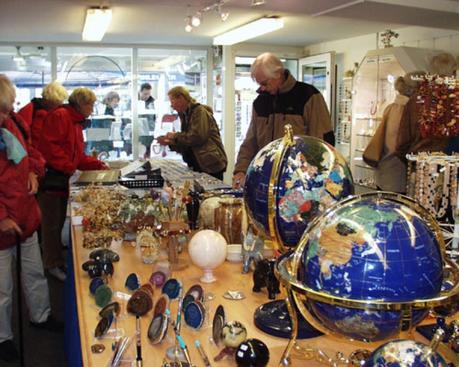
However many of the artisans and their families remained to continue the tradition through the generations. Today Idar-Oberstein is still famous for some of the finest gem carving in the world. Many modern lapidary artists still flourish, as well as the dealers who import rough stones from gem markets around the world.
In the 1980's, Afghan refugee jewelers escaped the Soviet invasion and traveled to Idar-Oberstein. They set up workshops and supplied themselves with lapis with the help of relatives, friends and dealers back home.
Mogbil Family
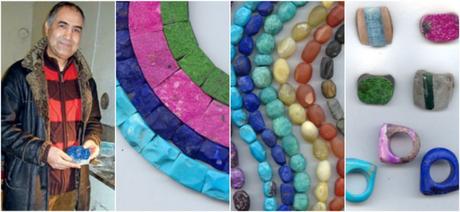
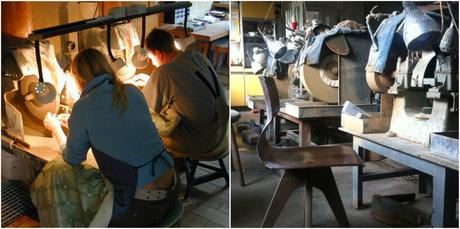
Mohr Family
Both Mohr´s grandfathers were jewelers. In 1920´s both traveled to Afghanistan to obtain raw material. They immediately focused on the potential of Lapis Lazuli for the German market. They sent back large consignments. The remains of those consignments still keep the company´s craftsmen busy today.
Breaking up the rough stones, they extract the most brilliant blue pieces to fashion mostly small items. They make abstract, floral, butterflies, scarabs, necklaces, brooches and so on. The difference from Khalils products are that Mohrs are highly polished. They also make pietra dura tables. These are more modest in design than the Florentine triumphs.
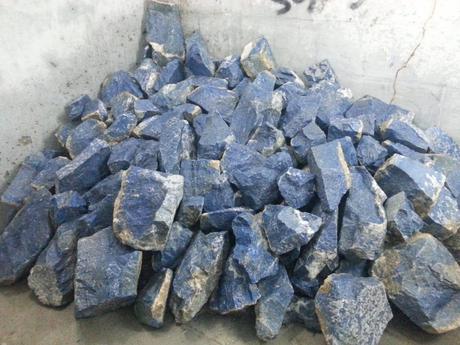
If the gem cutters from Idar-Oberstein run low in Lapis Lazuli, they don´t have to travel anymore to Afghan Blue Mountains. They just have to call up Afghan or Pakistani middlemen who maintain warehouses of the raw stones near Stuttgart. "If I need less than 20 kilos of medium grade lapis I can have if within two days", Mohrs says.
Larger quantities or better quality pieces take longer. "If they don´t have what I want in their warehouses, they generally contact a relative or associate in Kabul or Peshawar and have him send it by air freight or deliver it in person," Mohr explains.
New Destiny For Lapis
New bulk shipments of Lapis Lazuli go now to China and Hong Kong, "The Gem Capital of the World". The cheap labor and materials makes China a necessity to lapis manufacturing process. Even the gem cutters from Idar-Oberstein send thousands of gems including lapis to be cut and faceted at factories in Sri Lanka, Thailand or China.
Despite cheaper lapis products from China, dealers from Idar-Oberstein or not concerned about the competition. The traditional gem cutters from this beautiful German town have been transforming stones and gems into amazing jewelry and marvelous objects since the 1400´s. They've endured all kinds of difficulties and we believe they will keep doing just that.
Lapis Lazuli History in China
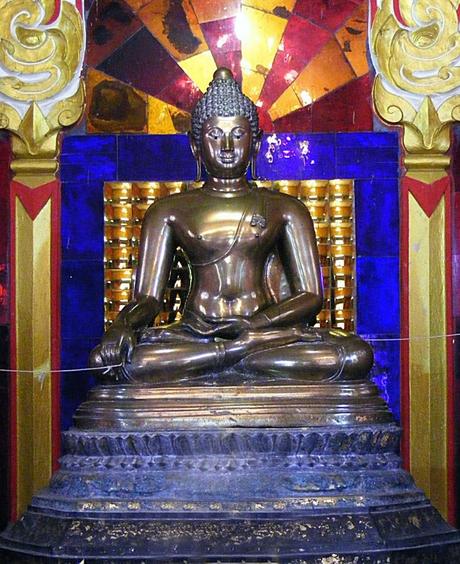
The Wakhan Corridor, Iskar
Bamiyan Valley
The Bamiyan Valley is located in the Hazarajat region of central Afghanistan. This is the region where Chinese and the natives historically traded Lapis Lazuli and bartered.
This valley is located in the silk route near the Badakshan. Remember we've talked about this region? The best quality of lapis comes from here. The Chinese use to call the Badakshan, Tu-ho-lo or Tukharistan.
In the 1 century B.C the Buddhist religion migrated from China to the Bamiyan Valley of Afghanistan. They built two Buddhas on a vertical sandstone cliff. One of 170 feet high and the second 115 feet high. These Buddha's represent the importance of this lapis valley to the Chinese.
Yungang Grottoes
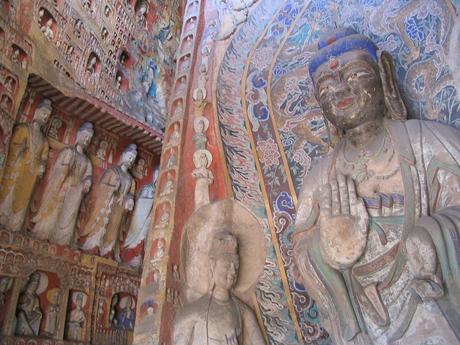
The Yungang Grottoes are ancient Chinese Buddhist Temples grottoes or caves near the city of Datong in the province of Shanxi. It is on the valley of the Shi River at the base of the Wuzhou Shan Mountains. It is one of the three most famous ancient Buddhist sculptural sites of China.

Medicine Buddha
According to Wikipedia, Bhaisajyaguru's original name and title was raja (king), but Xuanzang translated it as Tathagata (Buddha). The image of Bhaisajyaguru is usually expressed with a canonical Buddha-like form holding gallipot and, in some versions, possessing blue skin.
Medicine Buddha is one of many Buddha's who have attained the state of perfect enlightenment for the benefit of all sentient beings. The enlightened mind has eliminated all negativity and perfected all positive qualities.
When the Medicine Buddha achieved Buddhahood he became the Buddha of eastern pure land of Vaiduryanirbhasa "Lapis Lazuli Pure Land". A pure land is the celestial realm. Bodhisattvas would obtain pure lands after they attained buddhahood. Known as the king among medicines because of its effectiveness in treating both mental and physical diseases.
Lapis Lazuli Pure Land is far to the east and its ground is made of lapis and its streets are paved with precious stones and marked off with gold. The boundaries are demarcated with golden cords, the towns, towers, palaces, pavilions, as well as the balconies, windows and draperies are all made of the Seven Treasures.
The Lapis Healing Master is often shown in the company of seven other Medicine Buddhas. The Healing Master in his eastern Buddha realm known as Pure Lapis Lazuli is generally flanked by the two leading bodhisattvas of that pure land, Suryaprabha and Chandraprabha, respectively All-pervading Solar and Lunar Radiance.
Twelve Vows
He made twelve vows. The Twelve Vows of the Medicine Buddha upon attaining Enlightenment, according to the Medicine Buddha Sutra are:
- To illuminate countless realms with his radiance, enabling anyone to become a Buddha just like him.
- To awaken the minds of sentient beings through his light of Lapis Lazuli
- To provide the sentient beings with whatever material needs they require.
- To correct heretical views and inspire beings toward the path of Bodhisattva.
- To help beings follow the Moral Precepts, even if they failed before.
- To heal beings born with deformities, illness or other physical sufferings.
- To help relieve the destitute and the sick.
- To help women who wish to be reborn as men achieve their desired rebirth.
- To help heal mental afflictions and delusions.
- To help the oppressed be free from suffering.
- To relieve those who suffer from terrible hunger and thirst.
- To help clothe those who are destitute and suffering from cold and mosquitoes.
Honored Figure
The Lapis Healing Master is one of the most honored figures in the Buddhist pantheon. In Tibet the Medicine Buddha is revered as the source of the healing arts for it is through him that the teachings embodied in the Four Medical Tantras, the basis of Tibetan medicine came into being.
As explained in the first of these Four Tantras, the Lapis Lazuli Healing Master was once seated in meditation surrounded by an assembly of four circles of disciples including divine physicians, great sages, non-Buddhist gods and bodhisattvas, all of whom wished to learn the art of healing. Rendered speechless by the radiant glory of his countenance, they were unable to request the desired teachings. To accommodate their unspoken wishes, the Medicine Buddha manifested two emanations, one to request the teachings and the other to deliver them. In this way, then, the Buddhist explanation of the various mental and physical ailments, their causes, diagnoses and treatment and the maintenance of health is said to have originated.
During the 6 th century the Taoists worshiped animals. They carved creatures from lapis. In the 14 th century they made libation cups, urns and vessels.
Temple of Heaven
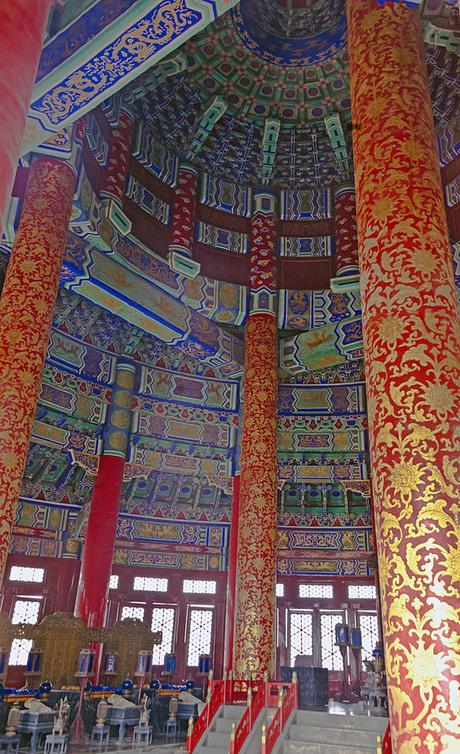
The Temple complex was built from 1406 to 1420 in the southeastern part of central Beijing during the reign of the Yongle Emperor. The Yongle Emperor also constructed the Forbidden City in Beijing. He used abundant Lapis Lazuli in the construction of this magnificent complex regarded as a Taoist Temple.
The Chinese grounded lapis into a cosmetic to paint their eyebrows and made sheets of it into screens studded with pearls.
They made the famous Chinese fish, the carp. This exquisite fish amulet is a prize you can acquire in your favorite Nammu.com store.
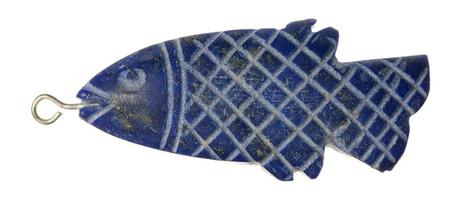
Pamir Mountains
The Pamir Mountains (discovered in the 1930's) are between Russia and China. These mountains contain a poorer quality of lapis. From this we conclude that the Pamir Mountains were not the source of Chinese early trade of lapis.
Present Day
Famous craft centers are in Liaonng, Kiangsu and Hunon. Shanghai is by far the most famous city where lapis carvings are made in rich and mythical traditions.
The cosmopolitan Hong Kong has a great quantity of carving workshops for lapis carving. The artisans polish and engrave the stones with a masterful skill. They pick the best colored pieces and make them into finer jewelry. The bigger pieces are also turned into images from libation cups, duck images to beautiful court ladies from the old days.

The Hong Kong artisans decide what kind of design best fits the piece of lapis. They are experts in their trade. Armed with the best tools and dills they work in small factories. An ordinary artisan has over a hundred diamond tipped drills in its working station which helps them cut intricate designs.
Raw lapis is sold by the kilo and some of the original pieces weigh 25 kgs. Lapis is sometimes dipped into a dye to enhance the color. Taiwan is considered a top center for dyeing stones.
Chinese artisans made Imperial buildings (tiles) of lapis lazuli. Lapis was also found in mausoleum screen walls, religious temples, worship offerings in stupas, as well as in utensils and adornments in the early Ming Dynasty.
It's been appraised as one of the Seven Buddhist Treasures. It is also considered in the five famous Chinese wares (Bullion, jade, lapis lazuli, porcelain and bronze ware).
The Chinese artistic and cultural richness of the Chinese ritualistic traditions combined with the skills of the craftsmen lead to magical lapis Lazuli pieces.
To my standards and I think everyone's standard, the Chinese artisans work more exquisitely than any other artisan in the world. They have a historic, mythical and rich tradition of lapis statue carvings.
Lapis Lazuli, a millenarian gemstone used by a millenarian culture...
Lapis Lazuli History in Russia
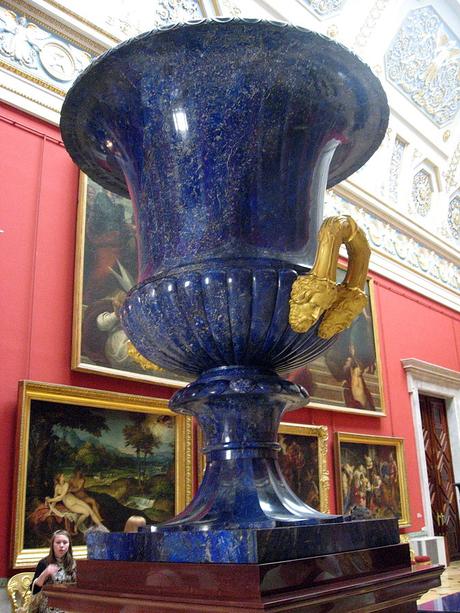
The Lake Baikal is the worlds deepest freshwater lake. It has 400 miles long and thirty miles wide. Volcanic explosion formed this lake. The caves of Lapis Lazuli are along the Angara River.
The Sljujanksa River also flows into Lake Baikal. The Lapis Lazuli caves are on the right slope of this river.
The Malo-Bystrinskoie site is fourteen miles from the right slope of the Lazurnaja River. The Kirghiz and Tadjik tribes are the nearby tribes to these sites.
The mines on the Talaja, Malaja and the Bistraja Rivers have an extremely difficult route. The lapis is in a steep wall of marble and gneiss, bordering an immense glacier.
Peter Carl Faberge
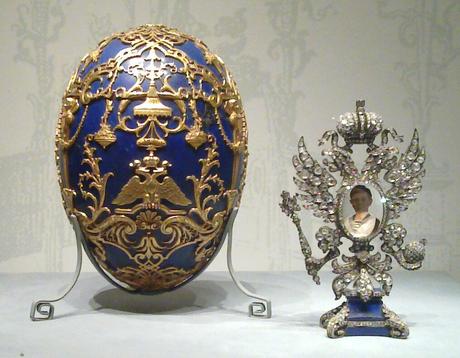
According to Wikipedia, the first Easter egg was commissioned in 1885 by Russian Czar Alexander III from craftsman Peter Carl Faberge. It was an Easter gift for his wife the Empress Maria Fedorovna.
This egg had a gold yolk, gold hen, miniature diamond crown and also a ruby egg inside. The Empress loved the gift so much that the czar decided to commission a new egg every Easter.
After the czar Alexander III died in 1894, his son Nicholas continued the tradition.
Lapis Lazuli Imperial Egg
Faberge designed the Lapis Lazuli Imperial Egg (1912)with six sections of overlay. Encrusting the egg with lacy, solid gold tracing in the style of Louis IV cage work and motifs of shells, scrolls, and also basket of diamonds ornamented the oval egg.
It also had inscribed the initials of A.F on top for Czarina Alexandra Feodorovna into a piece of diamond monogram. This was a symbol of the Imperial Crown of Russia.
The gifts from king to queen usually had a surprise inside. This time the surprise was a picture frame that held the image of their eight year old son Alexis. The frame was on top of a Lapis Lazuli base. Hundreds of diamonds set into the Russian double headed Imperial Eagle surrounded the miniature painting.
This Imperial Egg resides in the Virginia Museum of Fine arts.
Faberge Houses
The workshops of Faberge used lapis from both the mines of Afghanistan and Siberia. Faberge had offices in Odessa, Moscow, Kiev, St. Petersburg and also in London. Over 500 workmen cut jewels for Faberge by 1906.
Faberge and his younger brother Agathon sketched designs as well as Henrik Wigstrom. Watteau and Boucher were the ones in charge of painting the eggs.
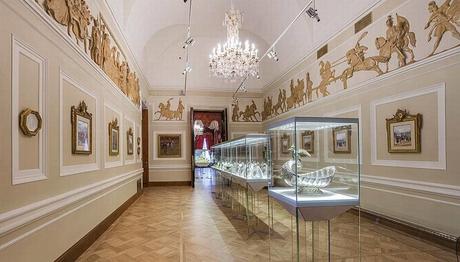
Scythian art influenced Faberge. Faberge houses started the collection of Imperial eggs in 1885. He also made picture frames, small farm animals, flowers, pendants, crosses, and also boxes. Magnificent Faberge pendants like the exquisite pendant you can find in your favorite Nammu store.
Faberge had been the imperial jeweler to three czars of Russia, Alexander II, Alexander III and also Nicholas II. He died at 74 on September 14, 1920. His tombstone read:
Charles Faberge, jeweler to the Russian Court Click To Tweet
Theophanes the Greek
Lapis Lazuli was an ingredient reserved for paintings of special importance, but in Russia it would have been even more highly regarded, perhaps brought north up the Volga by Armenian entrepreneurs.
Andrei Rublev
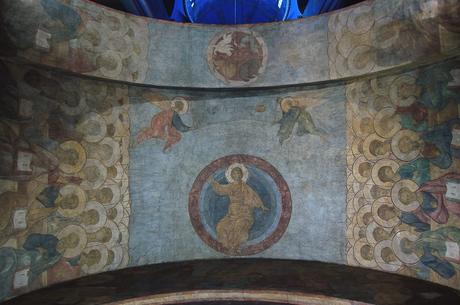
He also painted the frescoes of the savior Cathedral. Rublev also believed to have painted at least one of the miniatures in the Khitrovo Gospels.
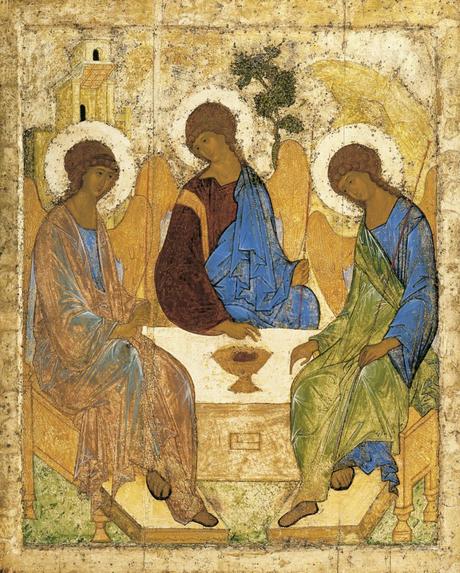
Rublev used Lapis Lazuli pigment spectacularly in the large icon (142 x 114 centimeters) of the Old Testament Trinity. We can also find this scene in the Benedictine church of St. Savin.
Rublev´s Trinity was painted for Trinity Cathedral at Troitse-Sergeyeva Lavra, now Zagorsk. The communists confiscated it and put it in the Tretyakov, while a huge copy is now in the old cathedral.
It must be one of the most copied icons of all time.
Trinity Story
According to the Genesis, the Lord with three superior beings came to visit the ninety-nine year old Abraham while he was camping in the plains of Mamre. He brought them water and ordered cakes and he also ordered a young man to kill a calf and dress it for the visitors.
Behind the table in the painting is the famous Tree of marme always depicted with a lower branch cut off because Abraham needed it for his camp fire. Seated at the table are the three beings. Three Angels dressed most beautifully and expensively in strong Lapis Lazuli robes. The majestic translucency of the pigment glowing from their garments.
Rublev would have learnt to use the precious pigment in the workshop of Theophanes the Greek. Who himself learnt it from masters in Constantinople and also from the Byzantine world.
The rarity of the pigment in icon painting testifies both to the superiority of Rublev as a painter, and also his recognition of the superlative qualities of his pigment.
Icon painting is alive and well today, in both west and post Communist east.
The painting is also full of symbolism and is interpreted as an icon of the Holy Trinity. The Trinity is also considered a Russian National patrimony.
The Russian Orthodox Church canonized Rublev as a Saint in 1988, celebrating his feast day on on the29th of January.
Hermitage Urns

Faceting Factories
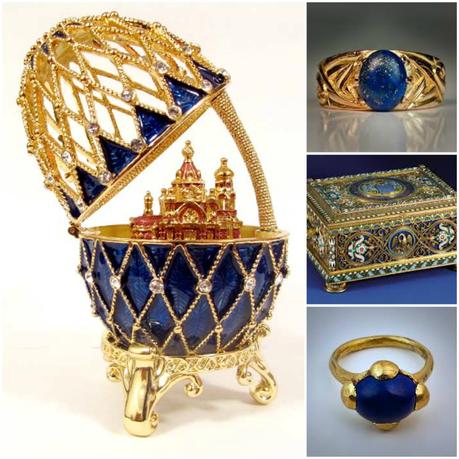
A stone cutting factory was established in 1787 at Kolyvan. Skilled craftsmen were experts at cutting the best parts of the Lapis lazuli, an almost purplish blue. It was dispatched to Ekaterinburg for pasting to the great urns demanded by the Tsars for the Jordan Staircase. The two thousand kilometer journey was nearly as long as that from Badakhshan to the Florentine masters. This journey was mostly accomplished in winter over the frozen steppe, then via frozen rivers and also canals.
The veneering technique became known as "Russian Mosaic". The fragments could be fixed to stone or metal and imperfections ground down and polished. Some vases took as much as twenty years to complete.
I can keep going and going with the Magnificence of Russian Art. Like I said in the beginning, a single post isn't enough. I hope you also enjoyed!
Lapis Lazuli History in Afghanistan
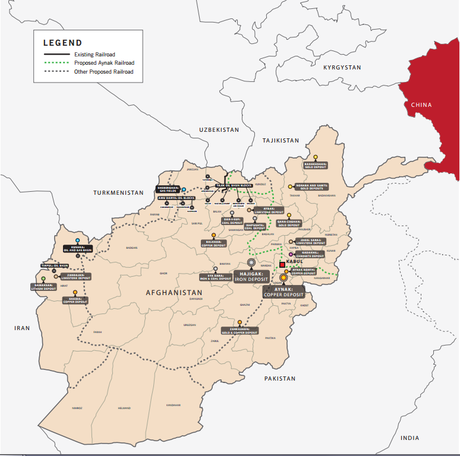
There are several places where lapis objects have been found. Some of the most important sites are:
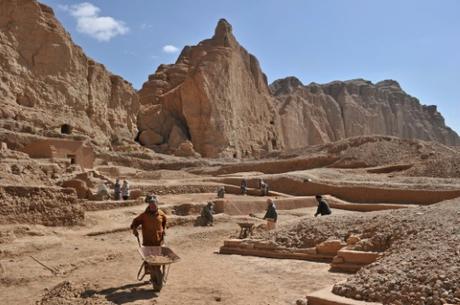 The oldest of these sites is probably Mehrgarh. It is just over the Afghan border in Pakistan. It is at the foot of the Bolan Pass in Pushtu country. So it is considered by Afghanistan´s Pushtu majority as part of their terrain.
The oldest of these sites is probably Mehrgarh. It is just over the Afghan border in Pakistan. It is at the foot of the Bolan Pass in Pushtu country. So it is considered by Afghanistan´s Pushtu majority as part of their terrain.
The Mehrgarh sites dates way back around 7000B.C when people were shifting from exclusively hunting and gathering into agricultural settlements. Settlements need graves as well as houses.
Tooled lapis beads appeared in Mehrgarh at all levels including levels between circa 4,400 and 3,500B.C, deposited in graves to assist that path to paradise. Here the sacred role of Lapis Lazuli begins.
Here archaeologists found pottery probably imported from Harappa away in the Indus Valley and concluded that Shortugai might have been a Harappan colony. It could also have been involved in the export of lapis and other raw materials either via the Indus or northwards into Central Asia.

North of Kandahar, in the Helmand basin the Mundigak site is found. The huge site consists of a series of mounds spread over some twenty hectares. There are city walls and a pyramid like structure. Mundigak Lapis was also connected with Shahri-I Sokhta.
We can ask ourselves. Why so little lapis? One of the explanations is that the locals don´t like outsiders making holes in their patch. They assume people are digging for gold, not lapis. If they come across lapis they keep it. Another explanation are the looters the keep anything they find.
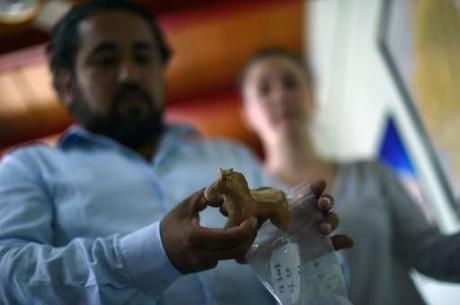 "The authorities have long feared encouraging looting by locating such sites. In fact, most have already been looted," says Julio Bendezu-Sarmiento, a French-Peruvian archaeologist who heads the French Archaeological Delegation to Afghanistan (DAFA).
"The authorities have long feared encouraging looting by locating such sites. In fact, most have already been looted," says Julio Bendezu-Sarmiento, a French-Peruvian archaeologist who heads the French Archaeological Delegation to Afghanistan (DAFA).
The project is going ahead now because "it is often the looters who are best informed about where the archaeological sites are".
Afghanistan's location and the variety and abundance of its bountiful mines of gold, copper and precious and semi precious stones like Lapis Lazuli makes it an archaeological holy grail.
Satellite Imagery
In DAFA´s offices a large satellite image of the country is shown on a widescreen display. Heritage sites are indicated by yellow, blue and red dots. This depends on whether they have been excavated, identified or only recently discovered.
Mohamed Nader Rassouli, a consultant at DAFA, lamented that houses have been built over the sites around Kabul that DAFA excavated in 1937.
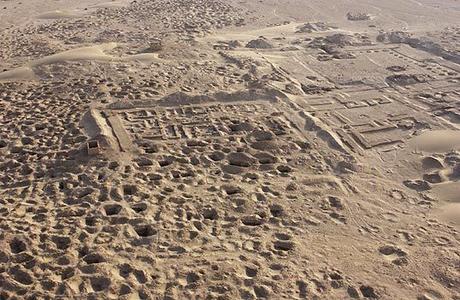 He also adds that in the provinces, sites have been destroyed by looters and antiquities traffickers as well as people simply working in the fields. It is vital to identify these sites, and then you know where they are when you want to build roads, operate mines or drill for oil.
He also adds that in the provinces, sites have been destroyed by looters and antiquities traffickers as well as people simply working in the fields. It is vital to identify these sites, and then you know where they are when you want to build roads, operate mines or drill for oil.
Interest in mineral resources is not a modern thing and it was the desire to exploit and manage these resources that undoubtedly led to the creation of these great cities.
Once this map is complete, it will be publicly available for people so that they can participate in its protection, said a spokesman from DAFA.

The protection of these historical lapis sites is of uttermost importance to learn more of our history. It is well known that learning more of our past can help us in our future...
